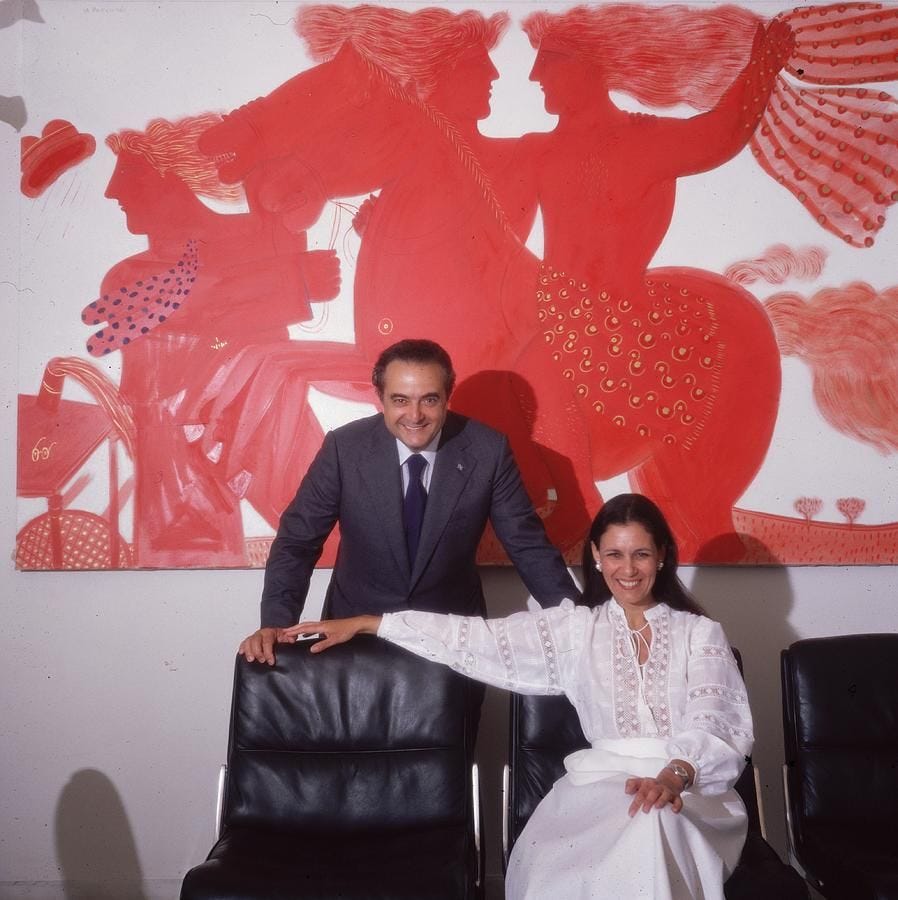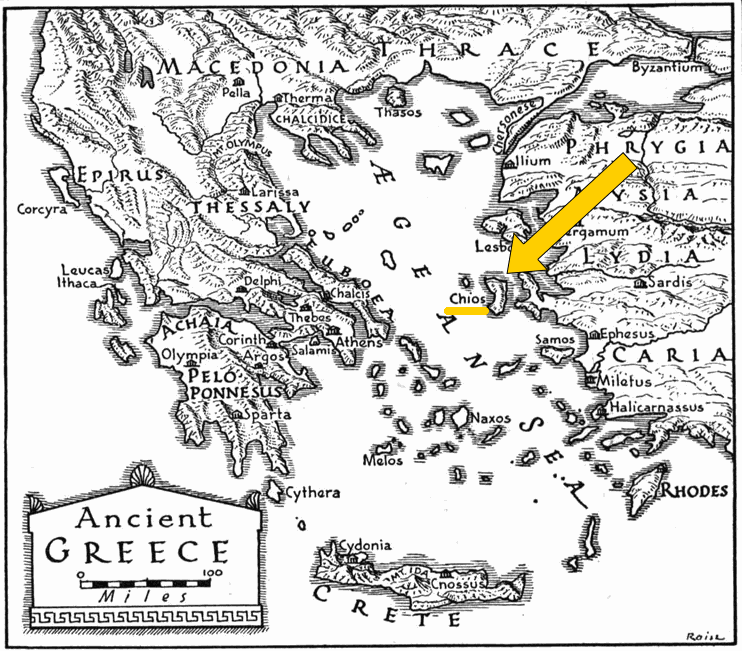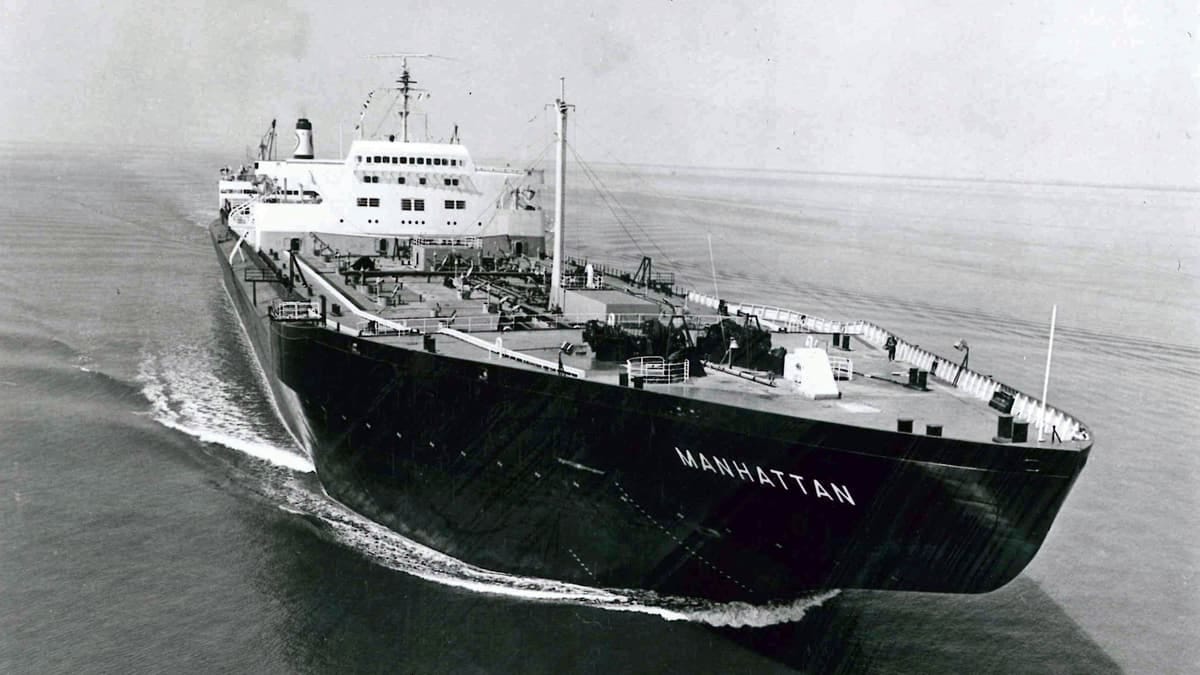Adorable Story #13: George Livanos
This week we fly to the Greek Island of Chios and see how a man shaped the modern world of maritime transportation
George Livanos

“If there is ever a place on earth where the genetic blueprint for a successful shipowner remains in potent circulation it must be the village of Kardamyla on the north-eastern tip of Chios, Greece.
Dug into rocky slopes, perched between the roughest waves of the Aegean and the thinnest strip of citrus groves, Kardamyla has been, since the 1750s, a cradle for merchant seamen of all sorts: captains, pirates, traders, mercenaries, shipowners, merchant bankers, independence fighters, all in the service of the Ottomans, of Catherine the Great, of Napoleon, of Italian or British venture capitalists and finally, from 1821 onwards, of themselves.”— Mike Monchos
Early life
George Panagiotis Livanos was born on July 6, 1926, in New Orleans, Louisiana, United States. He was the son of Stavros G. Livanos, a Greek shipping magnate who had established himself as a prominent figure in the international shipping industry. The younger Livanos was raised in a family steeped in maritime tradition, and from an early age, he was groomed to continue the family's shipping legacy (we must not confuse him with the other George S. Livanos who was indeed his distant cousin and brother of Athina Livanos Onassis).
George Livanos assumed US citizenship and later served in the US Army during both the Second World War and the Korean War. Both his parents died while he was an infant and he grew up in the care of his paternal uncle Pantazis and aunt Irene. He attended Athens College, the prestigious Greek-American private school, which he supported throughout his life and served later as a member of its board of trustees.
His earliest successes in the business came through the acquisition of WWII surplus Liberty ships which he reactivated and then eventually sold in Japan for scrap.
These repeated projects were lucrative in the 1950s as the charter payment for transporting a cargo from the US to Japan paid for the initial purchase and the reactivation costs: so the final scrap sale to the Japanese was pure profit.
In 1957, George Livanos married Fotini Carras, the daughter of another prominent Greek shipping family led by Stavros Carras: together they had one son, Peter and a daughter, Marina.
George Livanos' wit and sense of humor were legendary. During a dinner party at his home in Athens, a guest asked him how he managed to stay so successful in the volatile shipping industry. Livanos, with a twinkle in his eye, replied dismissively:
"I have a simple rule: When everyone is buying ships, I sell. When everyone is selling ships, I buy."
Rise to prominence
In the 1950s and 1960s, Livanos played a crucial role in expanding the family's shipping empire. He oversaw the construction of new vessels and the acquisition of existing ones, helping to grow the company's fleet and increase its market share.
In the 1960s, he took the helm of Ceres Hellenic Shipping Enterprises, the shipping company that his uncle, Captain John G. P. Livanos founded in New York in 1950. Eventually, he relocated the head office to Greece.
Among the many innovative projects that he initiated, one of the first was the idea of “mini-bulkers” that contrasted with an overwhelming trend for ever-bigger bulk cargo ships.
In fact, many African and Asian ports are located on or up rivers and thus required shallow-drafted tonnage which could reach them effectively and without trans-shipment.
The concept of the mini-bulker was conceived and successfully executed by Livanos. These were 1,800 to 3,500 dead-weight ships suited for coastal navigation, run with minimal crew and at small cost.
The United Nations used them to great advantage in Bangladesh and India and a few of them are still in operation in China and the Far East, to this day.
Innovations
George Livanos was known for his keen interest in shipbuilding technology and innovative designs.
Throughout his career, he played a significant role in the development and implementation of cutting-edge designs and construction techniques that revolutionized the shipping industry worldwide, among which we remember:
Very Large Crude Carrier (VLCC) "Manhattan": One of Livanos' most significant early accomplishments was his involvement in the construction of the first-ever Very Large Crude Carrier (VLCC), the "Manhattan." The vessel, which was completed in 1962, marked a new era in the shipping industry and set a precedent for the construction of larger and more efficient oil tankers, which dramatically reduced the cost of transporting oil and truly revolutionized the global oil trade.
Double-hull design: In response to growing concerns about oil spills and environmental damage, Livanos championed the adoption of double-hull designs for oil tankers. Double-hulled vessels have an inner and outer layer of steel, providing an additional layer of protection against leaks and spills. This design significantly reduced the risk of environmental disasters and has since become a standard feature in the construction of new oil tankers.
Liquefied Natural Gas (LNG) carriers: Livanos played a crucial role in the development of innovative Liquefied Natural Gas (LNG) carriers, which are designed to transport natural gas in its liquid form at extremely low temperatures, featuring advanced insulation and containment systems to maintain the cargo's temperature and prevent leaks, ensuring the safe and efficient transportation of natural gas.
Efficient propulsion systems: Livanos was a proponent of implementing advanced propulsion systems in his fleet to improve fuel efficiency and reduce emissions. Long before the world in general became familiar with the principle of climate change, Livanos had begun to heed warnings that abuse of the environment could destroy the planet.
Charity
Throughout his life, George Livanos supported numerous charitable causes and educational institutions, both in Greece and abroad. One notable example of his philanthropic efforts was the establishment of the Livanos Family Foundation, which provided scholarships and financial assistance to deserving Greek students.
In addition to his charitable endeavors, Livanos was an active participant in the international maritime community. He served on various industry boards and committees, contributing his expertise and knowledge to help shape the future of the shipping industry. In particular, he was a long-time member of the Union of Greek Shipowners and served as its president from 1984 to 1987.
Loyalty to his Greek roots prompted him to shun flags of convenience for his vessels, despite the enormous tax advantages that would have meant. Instead his ships invariably fly the Greek flag.
Later Years and Legacy
Throughout the 1990s, George Livanos remained active in the shipping industry, even as he began to prepare for his eventual retirement.
In 1994, due to poor health conditions, he handed over the day-to-day operations of Ceres Hellenic Shipping Enterprises to his son, Peter Livanos, but continued to serve as the company's chairman until his death.
George Livanos passed away on June 1, 1997, in Athens, Greece, at the age of 70.
— Alberto @






